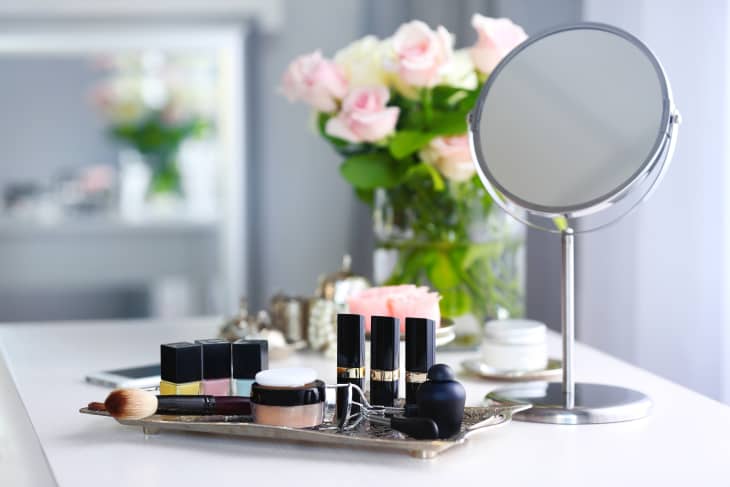How to Recycle Your Old and Empty Beauty Products the Right Way

More than 120 billion units of beauty packaging are created each year, according to TerraCycle. Of those units, only a small fraction is actually accepted into curbside recycling programs, resulting in most of it ending up in landfills. And the problem is set to get worse, with the global cosmetics market worth $340 billion in 2020, and expected to grow to $561 billion by 2030.
Beauty products are particularly difficult to recycle. Along with the plastic, there’s mirrored glass, small caps, pumps, and other things that can’t be recycled in our home bins. There are also toxic ingredients and hazardous waste to contend with, from items like nail polish and perfume.
But things are changing, and companies are getting on board by implementing recycling programs. Here are some options to consider.
Where to Recycle Beauty Products
Since its launch in 2018, the skincare brand Summer Fridays has asked customers to mail back five of their empty products to be recycled. The brand provides a free shipping label and also rewards consumers with a gift, like its mini Jet Lag Mask, valued at $25.
While more and more smaller brands like Summer Fridays are taking back products, bigger companies are doing their part to fill the gap. In 2020, Nordstrom launched its program BEAUTYCYCLE, becoming the first beauty recycling program available at a major retailer. The program accepts all brands and products, regardless of where they were purchased.
“We encourage customers to designate an area or container in their bathroom to keep empties to be recycled,” explains Gigi Ganatra Duff, the vice president of public relations and corporate affairs at Nordstrom. “Customers then bring their empty beauty products to any Nordstrom, Nordstrom Rack, or Nordstrom Local to be recycled.”
The retailer, which expanded its program to Canada earlier this year, then sends the products to TerraCycle where they are cleaned, separated, and recycled into metals, glass, and plastics. “For example, plastics are recycled into a wide range of new products including park benches and picnic tables, while metals are reused as base materials for stamped product applicators like nuts, bolts, washers, and rings,” explains Ganatra Duff.
Nordstrom’s goal is to take back 100 tons of hard-to-recycle beauty packaging by 2025, and the company is well on its way. In 2021, the BEAUTYCYCLE program saw six tons recycled, or roughly 66,000 items, and more than 12 tons have been recycled so far this year.
Top beauty retailer Sephora has also begun its own take-back service, which launched in July 2022 in collaboration with Pact Collective. At this time, there are only 23 locations in the U.S. and 11 in Canada where items are accepted.
Can I recycle beauty products at home?
It’s incredibly complicated and limited in what you can recycle at home, so it’s best to try to use brands and products that accept takebacks. However, if you want to give it a go, the first thing to look out for is the universal recycling triangle symbol, as it’s only the way to indicate the recyclable nature of the container. If you don’t see that symbol, unfortunately, it can’t be put in with your local recycle run.
Another thing to examine is the material, size, and color. “Things that are mixed materials are not designed for recycling, such as a plastic compact with a metal tray or mirror, or different kinds of plastic assembled together,” shared Elizabeth Schussler, senior director of social change, behavior, and impact at The Recycling Partnership, to Coveteur.
As for size, she mentioned that items smaller than two to three inches are also out as they can clog up the recycling processes. And as for color, if it’s very dark or black, it’s best to keep it out, as the automatic sorters sometimes have trouble determining where it needs to go due to its shade.
A 2017 study revealed that out of all our plastic waste, only nine percent was recycled, 12 percent incinerated, and 79 percent ended up in landfills or oceans. The statistics are alarming, and with the beauty industry only growing, we must take action now. While recycling programs are still new and have a long way to go, take advantage of these free services as it’s the only way to ensure your empty products are being sorted properly and that you’re doing your bit for the planet.